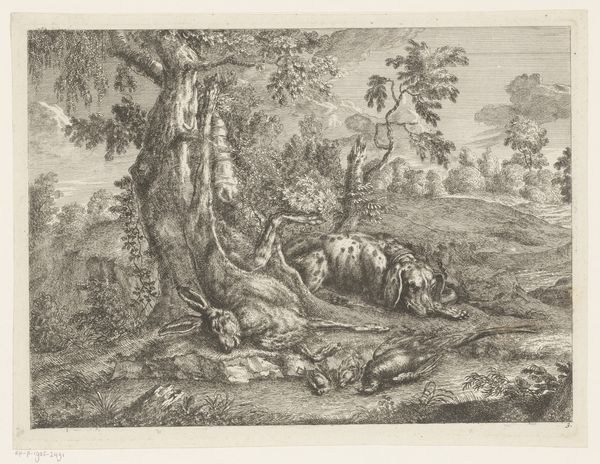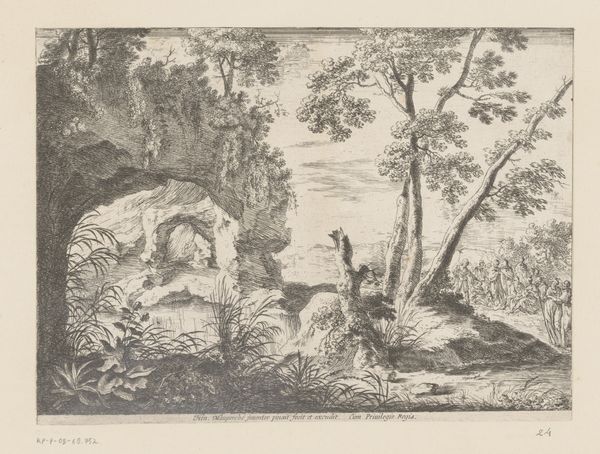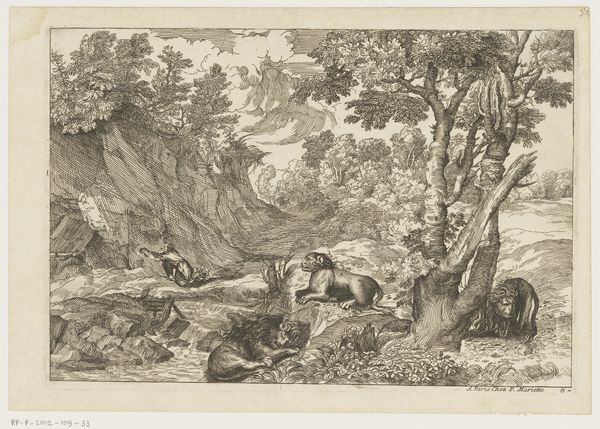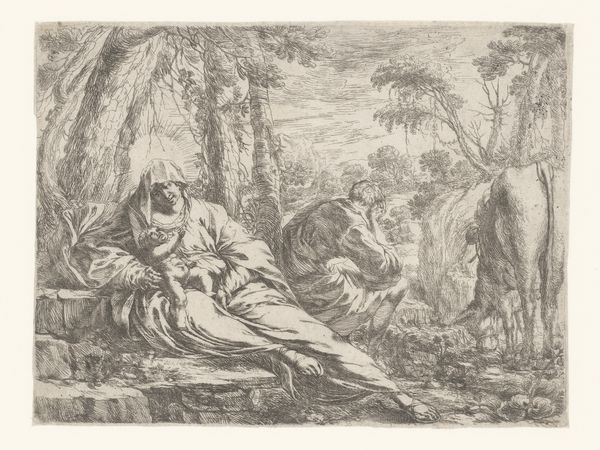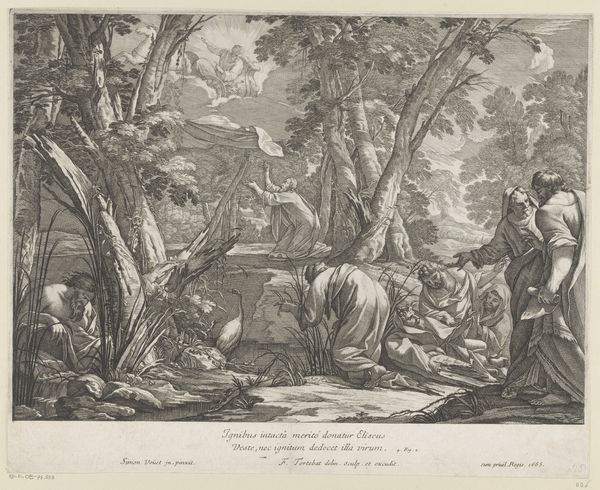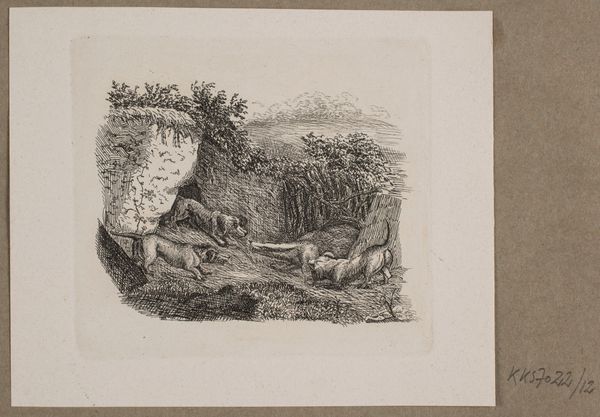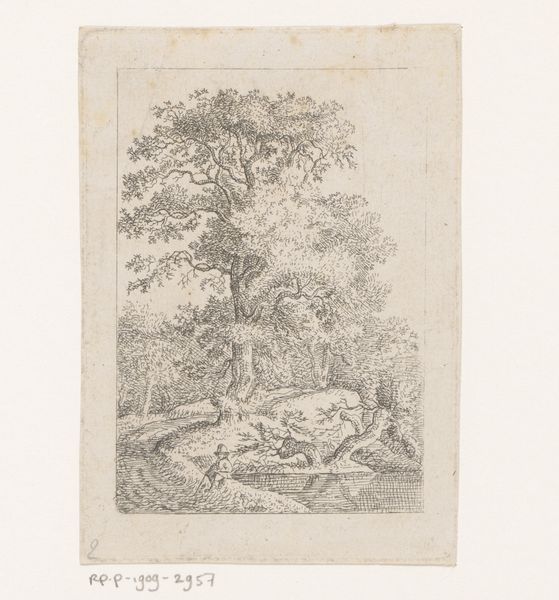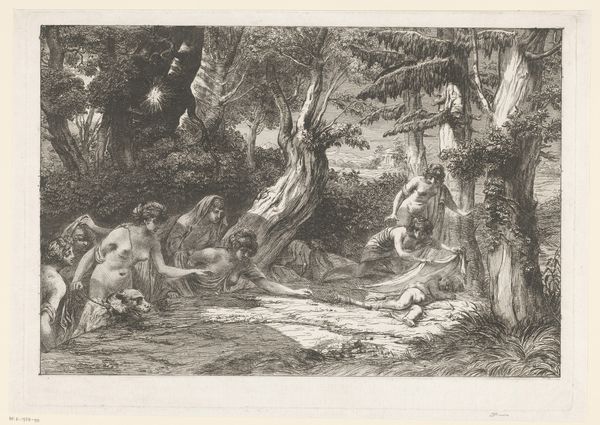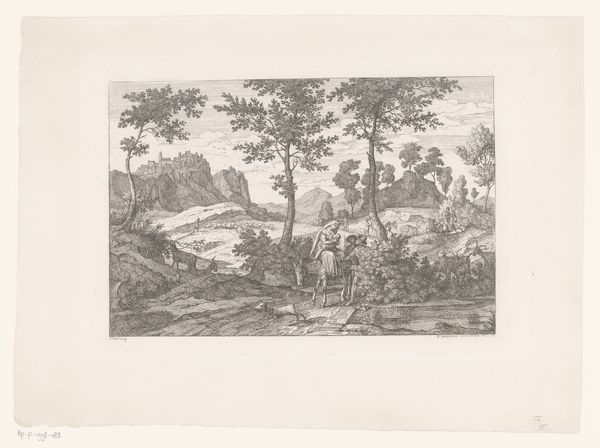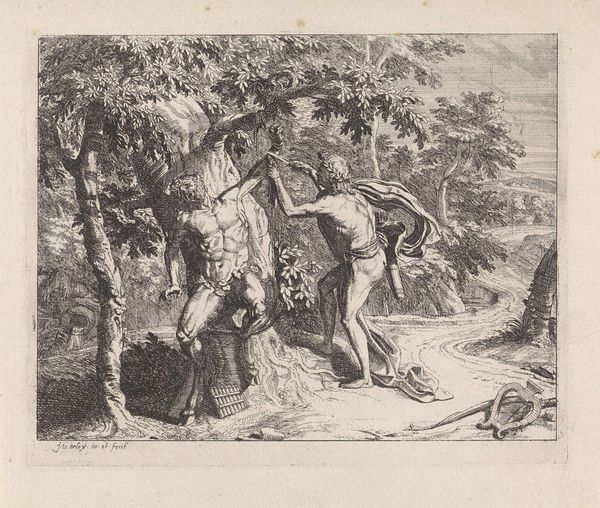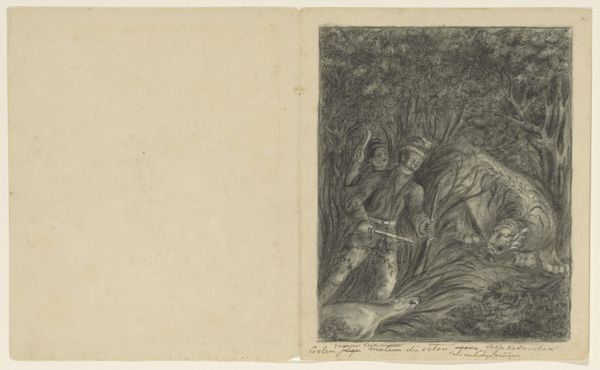
drawing, print, ink, engraving
#
drawing
#
narrative-art
#
baroque
# print
#
pen sketch
#
old engraving style
#
landscape
#
ink
#
ink drawing experimentation
#
geometric
#
pen work
#
engraving
Dimensions: height 257 mm, width 380 mm
Copyright: Rijks Museum: Open Domain
This landscape was etched by an anonymous hand, depicting a rocky scene with a lion. Note the humble shelter, supported by stilts, a motif echoing the primitive hut, the archetypal first dwelling. This form reappears across cultures, embodying humanity's fundamental need for protection and a connection to nature. Consider its echo in the stilt houses of Venice, adapted to their lagoon environment. The motif transforms: what was once a symbol of basic survival becomes an emblem of cultural identity and adaptation. There's a primal comfort in this structure, triggering a collective memory of seeking refuge. The lion, traditionally a symbol of strength, juxtaposed with the humble dwelling, evokes a dialogue between nature and culture. The image resonates with our subconscious desires for security and our place within the natural world. The Lion has different meanings throughout the times in different cultures, so we should be aware of all the context. The hut, however, continues to evolve, mirroring our ever-changing relationship with the landscape.
Comments
No comments
Be the first to comment and join the conversation on the ultimate creative platform.
